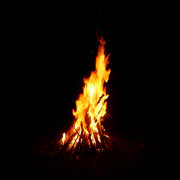Introduction to the Celts
The Celts were the first Europeans to emerge from the Alps in recorded history. There were two distinct times in Celtic culture, the first being the Hallstatt dating from 1200 B.C. to 475 B.C. Hallstatt Celts were known for their geometric art style and expert craftsmanship of metals. As the Hallstatt era came to an end, a new cultural style known as the La Tene period started to emerge.
Many changes occurred with the coming of the La Tene, such as new types of art styles, different transportation methods, advances in agriculture and an improvement in the economy. The La Tene Celts were ruled by kings and over-kings who had their own tribes, some of these tribes would be as small as 20,000 to as large as 250,000. The La Tene era achieved the greatest progress in territorial expansion, including the movement over the Alps and into the Po Valley then later settling in the eastern Italy. By this time the Celts had also moved into Ireland, Britain, France, Belgium and many Balkan countries. As the Roman and Greek Empires became more powerful they took over the Celtic lands.
 The Celts were the first people to have a recognised art style in central Europe. They also created many new inventions such as horseshoes, spoked wheels and brought about the usage of fertiliser and crop rotation.
The Celts were the first people to have a recognised art style in central Europe. They also created many new inventions such as horseshoes, spoked wheels and brought about the usage of fertiliser and crop rotation.
Roman and Greek scribes described the Celts as being very tall with an elegant body frame and a fresh faced look, but they most likely would have looked different in appearance depending on where they lived. A lot of them were fair Saxon like where as some were more Mediterranean looking. A Celtic woman would wear her hair in braids pinned with combs and other ornaments. Where as men kept their faces shaved apart from a long dropping moustache. The Celts liked bright colours and flashy clothes, which they would attach brooches to and also wear lots of jewellery which they were experts at crafting.
Being mainly farmers they built two types of structures, one of which would be a domestic dwelling, or farmhouse, the other being the oppida, or town. Their houses were made from wooden planks and wickerwork, with the roof being of thick thatch in the shape of a dome. If wood was sparse the structures would have been made of stone.
Women were confident and were valued as much as men to the Celts. Which was a lot different from Roman society where the male dominated. Sometimes Celtic women would be found to have several husbands all of whom she could inherit property from and rule!
© Kevin Wafer






Leave a Reply
Want to join the discussion?Feel free to contribute!